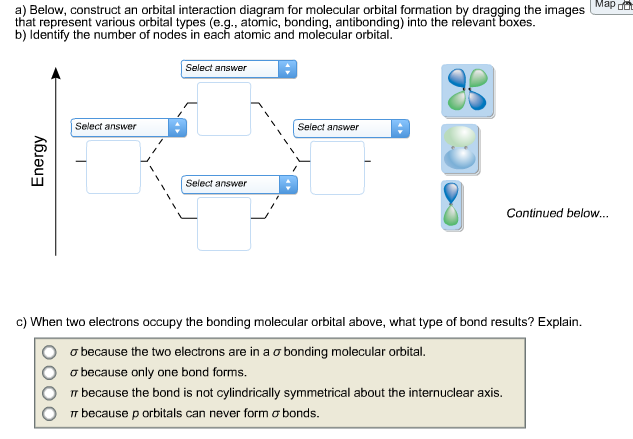

Nevertheless, we always have to be careful that we don’t forget about the particle-like properties of the electron as well. Now, this can get a little confusing, but remember, electron waves describe electron density or electron "fog" which comes from interpreting the wave-like properties of the electron.
#Two types of nodes occur in atomic orbitals series#
Certain lines were observed as a "sharp" series others were classified as "principal", "diffuse", or "fundamental" series, thus s, p, d, f.) These letters correspond to the shape of the electron wave, or at least the shape that the electron wave appears to take as a result of its electron density being thicker in one place than it is in the other. (These letters were chosen on the basis of observations of line spectra. In the last lesson, you learned that different electron wave shapes have different names and that these names are always letters of the alphabet like s, p, d, and f. When the Azimuthal Quantum Number is 0, The Electron Occupies an s Orbital Be able to recognize p orbitals by their shape.Be able to recognize s orbitals by their shape.

We'll tell you what an ℓ = 0 wave looks like, and what an ℓ = 1 wave looks like. Really, you just have to know, or be told – so that's what we'll do in the next few sections. Unless you have a lot of training in mathematics, and can understand the wave function, there's really no way for you to predict what the shape of a wave with a particular value of ℓ will look like. You also know that certain waves are spherical while others are dumb-bell shaped, or butterfly shaped or just plain crazy shaped! But how do you know which value of ℓ corresponds to which shape? What about the effects of ℓ? You know that ℓ tells you something about the shape of the electron wave. In other words, the electron wave points in different directions. For different values of m l, the electron wave gets rotated into different orientations. Similarly, the effects of m l are easy to visualize as well. For bigger values of n, the electron wave gets bigger, and it ends up with more nodes. Now the effects of n are probably easy to visualize. In the last lesson, we learned how the principal quantum number determines the size of an electron wave (and the number of nodes), ℓ determines the shape of an electron wave, and m 1 determines the orientation of an electron wave.


 0 kommentar(er)
0 kommentar(er)
